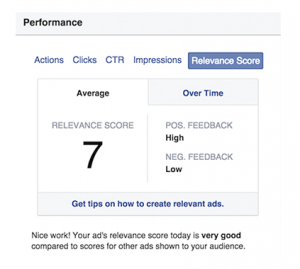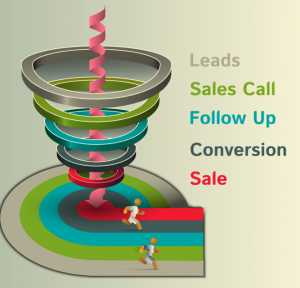Social advertising & Facebook marketing to parents
July 29, 2015
Mothers aren’t just active users of social media; they live and breathe this form of networking. They use it for a variety of functions beyond entertainment and are a valuable commodity when it comes to marketing through social.
High level research from Pew Research Center(Sept 2014) shows just how invested US mothers are in social media; they use it for:
– support
– to gain information
– to contribute by responding to questions
– as a method of responsiveness to both good and bad news
What this data reveals is that mothers are active on social media and that it is meaningful to them. They are not ‘passing through’ as mere observers; rather, they are active participants in this life stage and use social media platforms to remain connected within motherhood.
Brands can utilise this info by focusing their marketing on mothers and their activity. Content should be focused and resonate strongly, tapping into the purpose and function of social media in a mother’s life.
Furthermore, Facebook tops the list for percentage of parents who use social media, by quite a large margin. Although other platforms have gained in popularity, Facebook should remain a priority within marketing plans as it has the highest reach by a long shot.
What the research highlights is that mothers are active users on social media, but utilise it for various reasons. Often the goal is to spend time in a leisurely fashion and alternatively it is more purpose driven. At agency:2, our secret is to hone in on the motivation behind social media use and thus connect brands to parents’ Facebook activity through smart content and clever targeting.
What’s more powerful today – content or community?
July 16, 2015
Social media trends are continuously changing. Reactive content is on fire, videos are taking the lead and Instagram is the new black.
Brands are constantly trying to maintain their social currency, by creating strong communities of like-minded fans who engage with their content.
In some scenarios, we need to consider what’s more powerful…content or community?
Communities move on
Think about new mums. Early motherhood is lonely and mums often find support in the mummy community. But, babies are small for a very short time. What happens when they move on from their current stage? They need something new to engage them, something new to talk about other than nappies and baby food. A mum engaged may leave the community to find something else.
Contrast this with book lovers. They will always be book lovers. A passion doesn’t usually fade; in contrast, it may grow over time. These fans are likely to stay part of a community that they engage with. Unless, the content grows stale and doesn’t keep them there.
How to keep fans engaged for longer
So where does this leave a brand’s marketing strategy? Is it better to focus on building the community or producing high quality content? The answer is balancing the business objectives with the audience’s needs – strategies that encompass the proper use of social media and are aligned with business goals, will be more successful towards building communities and keeping them.
Next Gen social insights drive ROI
July 3, 2015
Social Insights Drive ROI
Our challenge: A global hotel chain wants to run a social campaign to highlight their fabulous newly decorated rooms. Traditional digital marketing routes have not yielded results, so they need to think outside the box and figure out how to reach their audience in a new and innovative way.
The Target audience: Young professionals who enjoy short-haul travel.
Our solution: Using specialist insight technology to discover their audience’s passions, the data reveals that this target audience is predisposed to Michael Palin and “trying interesting foods”. Two seemingly random insights…but a post with a Michael Palin quote, superimposed over tempting images of regional dishes, accompanied by a link to book a hotel room, drives significantly more action than a generic post focused on booking hotels.
Our Results: Dramatically increased audience size by over 400% + lower cost per action by 250% = greater sales & happy marketers.
The most effective way of hyper-targeting through social advertising is becoming increasingly dependent upon using AUDIENCE INSIGHTS to:
>Connect with a fan’s emotional side
>Understand an audience’s motivations and drives toward purchasing
>Engage with the audience’s wider interests to spark a connection
>Break through the hyper capacious noise of internet traffic and create meaningful associations
We are proud to use our Social Insight Engine to achieve these goals, a next generation social insight tool which has been developed to give marketers access to audience insights not previously available. This allows them to accelerate beyond their competition into new, exciting realms of marketing.
Facebook Relevance Score – Top Tips
March 4, 2015
The relevance score is valuable towards further identifying the strength of your ad campaigns. It is important to note, it will not only affect the cost of your ads, but will also affect the visibility of your ads. (See here for Facebook’s announcement on the relevance score.)
Facebook places high importance on relevance, in order to track what will be shown in an individual’s newsfeed. In essence, obtaining a high relevance score will decrease your costs; the more successful your ad in terms of targeting and engagement, the lower the delivery costs. On the flipside, if your ads are ineffective, expect to pay more for them.
It is calculated based on feedback, including both positive and negative feedback. For example, if you obtain a high number of video views, that could contribute to an increased score. If people hid your page in response to your ad, that could contribute to a decreased score.
This is what the relevance score looks like (score is between 1 -10)
How can you use this to your advantage?
1) It can lower the cost of your ads – the higher your ad’s relevance score, the lower the cost of the ad. (This is not a direct correlation as other factors are also considered with regards to costing ads.)
2) It can be used as a testing mechanism for efficacy and efficiency of ads.
3) It can help modify campaigns that are struggling or are not achieving at the expected level.
4) It can be used as another reporting figure for success rates and learnings.
Keep in mind, the relevance score has been designed and introduced by Facebook. Achieving your campaign objectives should remain your key indicators of success, and the relevance score is simply another tool to add to your tool box.
Social for selling
February 6, 2015
A new report by Shareaholic this week highlighted the following: Social media has become the number one driver of ALL website referral traffic. In 2014, the figures rose from 22.71% to 31.24%, a massive increase over this time period.
This is a significant opportunity to consider; although this growth may not be sustainable, it is definitely something for businesses to focus their marketing campaigns on now.
Which channel is the biggest referrer? Unsurprisingly, Facebook is still tops by a wide margin (24.63% in December 2014 vs. next best channel Pinterest at 5.06%). Despite the challenges of decreasing reach resulting in increasing media spend and younger audiences leaving etc., Facebook remains the channel of choice to get the word out about your business. Not to mention, social media traffic referrals grew by 59.58% in this same time period.
What does this mean for marketers? If social media is now the number one referral method where both good and bad feedback can go viral, your business needs to ensure the following is in order:
• Customer satisfaction – expectations of service are high and fans are now posting their grievances on social media pages. If your business is not able to deal with criticism and complaints effectively, it will ultimately affect your sales negatively.
• Moderation – social media trolls are active and can be vicious. Moderation is key towards managing press and ensuring negativity is dealt with appropriately.
• Quick response times – customers are online 24 hours a day. If they can’t reach you immediately, they will move on quickly to the next best seller.
• Community growth – engagement is key towards building your brand, and will contribute to healthy sales. An engaged community will lead to strong brand awareness, driving clicks to your website.
A focused social media strategy will ensure your website will be seen, ultimately leading to increased sales and return on investment
Social Media Networking By Age Groups
January 23, 2015
“It wasn’t like that in my day….”
“When I was your age…”
These idioms are now applying to social media too. Channels are changing quicker than we can take a selfie. The younger generation is continuously finding new ways of communicating and moving on from previous popular sites whilst the older generation is started to get socially active more than ever before.
An American report entitled “Social Media Update 2014” (see link here) concluded that whilst Facebook remains the most popular social networking site, others are growing at a higher rate. What does all of this data mean? What are the current trends?
Let’s look at social media by age group:
Tweens
Users of social media are bound by terms and conditions and age restrictions. The youngest user of Facebook is required to be at least 13 years old before they can create an account (and older in some jurisdictions) and Twitter restrictions clearly states that the site is for users over 13. Do these age limitations stop the youngest users from interacting on social media? This guide on how young kids should be in order to join Instagram is viewed over 400 times a day, so this is clearly on the minds of parents and tweens. We shouldn’t assume that all youngsters follow the guidelines and avoid social media; rather the opposite.
Teens
An article in the Telegraph (see here) found that “Teenagers are moving away from ‘traditional’ social networking sites like Facebook and Twitter in favour of mobile messaging apps like WhatsApp and WeChat.” It would seem that teenagers want something instant and immediate, and don’t have time for Facebook which may now be seen as ‘uncool’. Whilst the jury is not out as to whether teens have abandoned Facebook and Twitter, the trend seems to be moving towards this age group using other apps as well. A common sense media article highlights the sites that teens are most likely to use.
Millenials
For this group, it’s all about the photos.
Instagram is now more popular than Twitter (source), and this age group is partly responsible. According to the report mentioned above, half of online adults aged 18-29 used Instagram, and more than half use it every day. However, as Business Insider pointed out, Facebook can’t be ignored and is still the most popular social network with 58% of all age groups saying they have a personal profile page.
30-49 year olds
According to Pew Research Internet Project (see here) for adults age 30-49, a whopping 82% of them use social networking sites. This is only marginally less than 18-29 year olds, of which 89% use social networking sites. However, it is important to note that this is the only age group in the Social Media Update report that dropped in Facebook usage – could this mean that as usage is up, maybe this group is looking elsewhere as well?
Seniors
Although Facebook was originally launched at Harvard for college students, the user demographic has changed and continues to change! By 2014, according to the Social Media Update, more than half of online adults 65 and over are now using Facebook, which is the biggest jump amongst all of the age groups. Online usage of all social networking sites increased but not as significantly as on Facebook.
Interesting trends! Is it worth breaking down the data to see where best to focus your social media marketing in 2015.
Facebook’s new call to action for 2015
December 15, 2014
Facebook Pages are giving marketers additional capabilities on their brands’ pages with a set of new call-to-action buttons.
Call-to-action options, including Book Now, Contact Us, Shop Now & Sign Up, will help brands actualise the value of their communities. A welcome move, especially after the challenge of reduced organic reach that Facebook Communities managers have been faced with.
It is an interesting move that Facebook are placing this call-to-action button in such a prominent position (next to the Like button), encouraging marketers to consider Facebook as the social gateway to their other online activity.
Initially the call-to-action buttons will roll out in the States, followed by the rest of the World.
Facebook have followed the success of call-to-action buttons on other assets including Facebook ads.
Marketers should use the opportunity to test and optimise the new functionality with the curiosity, discipline and critical eye of any good eCRM social media professional.
Facebook CEO Mark Zuckerberg has long talked about offering more action orientated options communities. We expect more action-orientated buttons to follow later on in 2015
Facebook and Mobile Usage 2013 Predictions
November 19, 2012
Mark Zuckerberg recently proclaimed at the TechCrunch Disrupt conference that he believed that Facebook’s future lay with mobile devices: “We think we’ll make a lot more money than on desktop”. With click-through rates already 14 times higher on mobile devices this news is hardly unexpected. Zuckerberg admitted past mistakes Facebook had made with mobile apps for multiple devices; yet asserted that his company had learned from these mistakes and Facebook is “now a mobile company.”
With more than half of Facebook users already using mobile devices to access their accounts (including Facebook’s CEO himself), this is a key area for development. It is critical for Facebook to get mobile technology right if they want to secure their success and the loyalty of their investors.
So what should we expect for Facebook in 2013? There have been a number of rumours circulating that Facebook is looking to create its own mobile devices, however Zuckerberg has firmly denied this rumour. We believe that mobile advertising will become increasingly better targeted towards individual users, as Facebook collects more information about users through engagement. What is clear is that Facebook will continue to push new features for brands to drive revenue through mobile ads and that we will see an increase in commercial activity. With Zuckerberg claiming that Facebook is “just getting started” at agency:2 we are eagerly monitoring and responding to each new development.
http://www.sfgate.com/news/article/Zuckerberg-Facebook-future-is-mobile-3858141.php [accessed 12/11/2012].
http://allthingsd.com/20120810/facebooks-future-in-mobile-advertising-its-all-about-wi-fi/ [accessed 12/11/2012].
http://www.sfgate.com/news/article/Zuckerberg-Facebook-future-is-mobile-3858141.php [accessed 12/11/2012].
http://allthingsd.com/20120810/facebooks-future-in-mobile-advertising-its-all-about-wi-fi/ [accessed 12/11/2012].
On your marks – going social for the Olympics
April 12, 2012
The London Games begin in just over 100 days’ time involving many thousands of spectators, participants and sponsors:- the physical architecture is more or less in place, the infrastructure pretty much on track, the athletes are reaching the apex of their training, games volunteers have been recruited, and trade in tickets, travel and accommodation is ramping up.
Heralded as the ‘Social Games’ (following on from the ‘twinter olympics’ in Vancouver 2010) the challenge for one of the most tightly-protected super brands is to nourish authentic social engagement around what is arguably the biggest show on earth. A snapshot of the twittersphere shows that push marketing is in evidence: – the obvious messages are getting traction [who IS coming down to the CocaCola Olympics Gig in Hyde Park]; along with issues that reflect the UK national news agenda [anti -cuts ‘street parties’ to rival Queen’s Diamond Jubilee and Olympics?]; and the troubled global backdrop [somali Selectors worry will people they choose now still be alive come July?].
The learning from recent Games is that the three ‘Cs’ – conversation, collaboration and community – that underwrite successful social campaigns can be achieved with planning, structure and insight. Not all of which is yet in evidence in official Olympic channels.
By Rachel Moses
Time to make clients fully aware of the Cap Code
December 9, 2011
Back in March 2011 we reported on a significant day in the history of digital and social media marketing and advertising. When the ASA’s (Advertising Standards Authority) remit was extended to cover all brand owned websites, their social media pages as well as video and mobile campaigns.
The changes to the Cap Code meant the ASA had the power to regulate all online and mobile marketing communications and ensure compliance with the Code of Advertising, Sales Promotion and Direct Marketing (The CAP Code). This covers all businesses, regardless of size, and extends to other non-paid-for space online under your business’ control (e.g. messages you post on social networking platforms such as Twitter and Facebook).
This Code also extended to cover not just what the brands themselves posted but also rules on how brands should not retweet messages or Like comments on Facebook that a user has written which are incorrect as they will still be liable based on them endorsing the content.
The intention was to make all online communications more transparent and ensure people reading online content are receiving honest and truthful messages. However, since the laws have been implemented brands have still unintentionally broken the law within social media, and the IAB has had to launch guidelines to help brands comply with consumer protection law around the payment for content to promote products within a social media environment.
Recently Saville Home Management was found to have Tweeted misleading and unsubstantiated claims on the Twitter feed of cmRENT estate agents that “cmRENT have 93 Rental properties available” and “cmRENT have 105 Rental properties available”. They were reprimanded by ASA and the offending tweets were removed.
It is clear that brands need to be more mindful of the laws that have been put in place and agencies need to be offering their clients greater guidance as to what is and isn’t allowed as part of the Cap Code. At agency:2, as one of the Founders of the DMA, we have constantly adhered to strict ethical guidelines. We are proud of always working ethically and legally for the good of our clients – brands must be increasingly aware that whatever they post on social platforms must be transparent and clear.




